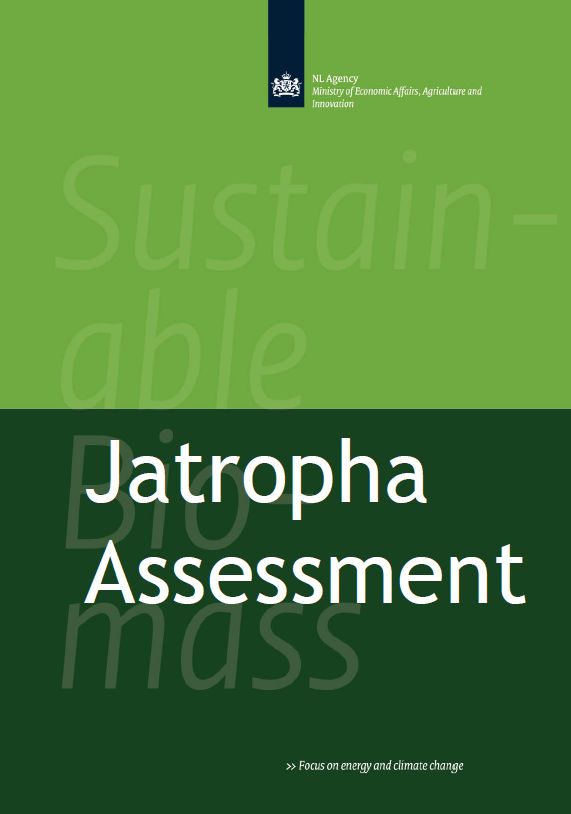Jatropha Assessment

Agronomy aspects of jatropha are merely reported for juvenile Jatropha curcas
plants (seedlings) and relatively young production systems of less than 3 years
old. Reports on germination, transplanting and propagation are quite complete,
but mostly refer to (greenhouse) experiments and to a lesser extent to small-scale
and industrial scale field production sites. The lack of well described methodologies
for the response of Jatropha curcas to natural and additional resources such as
radiation, temperature, water and nutrients is striking, but understandable, as the
majority of Jatropha stakeholders are not equipped and not educated to produce
scientifically sound reports on Jatropha curcas growth and production. Only limited
experimental fertilization experiments have been presented so far.
Recommendations on fertilization and irrigation strategies may still be lacking
because recycling of nutrients is not well understood either. The toxic compounds
(phorbol esters) of jatropha plant residues and press-cake degrade within 10 days
when incorporated in the soil, and could not be traced in vegetable crops fertilized
with jatropha press-cake.
Pruning methods (timing, frequency and technique) play a very important role in
Jatropha curcas flowering rates, but are not well covered in the experimental and
the small-scale and industrial production domains. This should be further
investigated.
